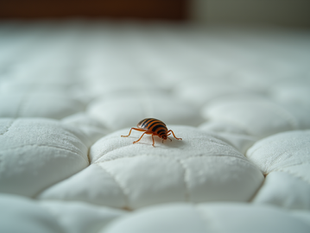
What to Expect During a Bed Bug Home Inspection
0
5
0
Discovering the possibility of bed bugs in your home can be stressful. Knowing what to expect during a bed bug inspection can help ease your worries and prepare you for the process. This guide will walk you through the steps of a professional bed bug inspection, what inspectors look for, and how you can assist in making the inspection thorough and effective.
Understanding the Bed Bug Inspection Process
A bed bug inspection is a detailed examination of your home to detect the presence of bed bugs. Professionals use various techniques to identify signs of infestation, including visual checks and sometimes canine detection. The goal is to find bed bugs early before they spread and become harder to control.
During the inspection, the specialist will focus on common hiding spots such as mattress seams, bed frames, furniture joints, baseboards, and electrical outlets. They look for live bugs, shed skins, eggs, and dark spots of excrement. The process can take anywhere from 30 minutes to a few hours depending on the size of your home and the extent of the suspected infestation.
To prepare for the inspection, clear clutter around beds and furniture to give the inspector easy access. Avoid moving furniture or disturbing potential hiding places before the inspection, as this can scatter bed bugs and make detection more difficult.

What Happens During a Bed Bug Inspection
When the inspector arrives, they will usually start by asking questions about your situation, such as when you first noticed signs of bed bugs and any previous treatments. Then, they will begin a systematic search of your home.
The inspection typically includes:
Visual examination: Inspecting beds, couches, chairs, and other furniture.
Checking cracks and crevices: Bed bugs hide in tiny spaces, so inspectors look closely at baseboards, electrical outlets, and behind wallpaper.
Using tools: Flashlights, magnifying glasses, and sometimes bed bug detection traps or monitors.
Canine inspection: Some companies use trained dogs to sniff out bed bugs, which can speed up the process and increase accuracy.
If bed bugs are found, the inspector will explain the severity of the infestation and recommend treatment options. If no bugs are found, they may suggest follow-up inspections or preventive measures.
It is important to hire experienced professionals who specialize in bed bug detection. For reliable and thorough bedbug inspection services, consider contacting Tri-State Bed Bug Dogs.

How much does it cost to have your home inspected for bed bugs?
The cost of a bed bug inspection varies depending on several factors:
Size of the home: Larger homes require more time and effort.
Inspection method: Canine inspections may cost more but offer faster results.
Location: Prices can vary by region and company.
Extent of inspection: A thorough inspection of multiple rooms costs more than a quick check.
On average, a professional bed bug inspection can range from $100 to $300. Some companies offer free inspections if you proceed with their treatment services. It is wise to get quotes from multiple providers and ask about what the inspection includes.
Investing in a professional inspection early can save money by catching infestations before they spread and require costly treatments.

How to Prepare Your Home for a Bed Bug Inspection
Proper preparation can make the inspection more effective and efficient. Here are some tips to get ready:
Declutter: Remove items from floors, beds, and furniture to give inspectors clear access.
Launder bedding and clothing: Wash and dry on high heat to kill any bed bugs.
Avoid moving furniture: Let the inspector handle furniture to prevent spreading bugs.
Vacuum thoroughly: This can remove some bugs and make signs easier to spot.
Make a list of concerns: Note where you have seen bugs or bites to inform the inspector.
Following these steps helps the inspector conduct a thorough search and increases the chances of detecting any hidden bed bugs.
What Happens After the Inspection?
Once the inspection is complete, the inspector will provide a detailed report. This report includes:
Whether bed bugs were found.
The extent and locations of the infestation.
Recommended treatment options.
Preventive advice to avoid future infestations.
If bed bugs are detected, treatment may involve chemical sprays, heat treatments, or other methods. It is important to follow the professional’s instructions carefully to ensure successful eradication.
If no bed bugs are found, the inspector may suggest monitoring your home regularly and taking preventive measures such as encasing mattresses and reducing clutter.
Regular inspections are a good practice, especially if you live in multi-unit buildings or travel frequently.
Understanding what to expect during a bed bug inspection can help you stay calm and prepared. Early detection is key to controlling bed bugs effectively. If you suspect an infestation, don’t hesitate to schedule a professional inspection to protect your home and peace of mind.






